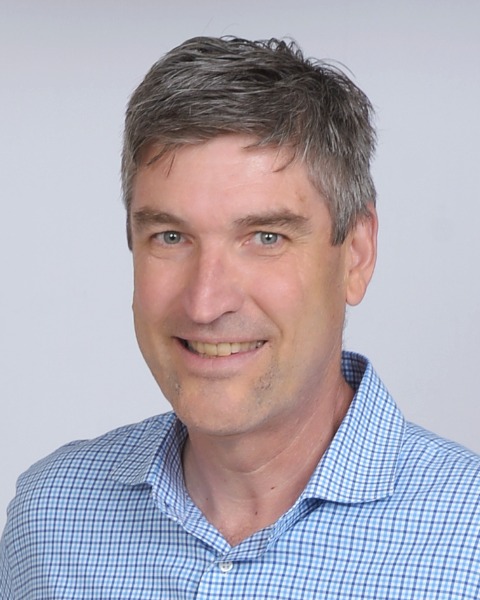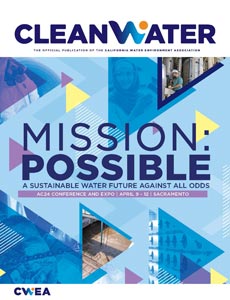Technical Session Proposal
Water Resource Recovery Facilities
Greenfield WRRF Delivers Complete Resource Recovery and Community Resilience
Thursday, April 11, 2024
3:55 PM - 4:45 PM
Location: A5-A6

Margaret Laub Niehoff (she/her/hers)
Project Development Manager
Anaergia
Carlsbad, CA
Michael Walkowiak, PE, ENV SP
Managing Principal
Brown and Caldwell
Walnut Creek, CA
Lead Presenter(s)
Track Lead(s)
Presentation Description: East Valley Water District (EVWD) initiated greenfield development of the Sterling Natural Resource Center (SNRC) to provide water recycling for groundwater recharge and enhance their core mission of water production. SNRC enables EVWD to provide in-house wastewater services to ratepayers, rather than relying on neighboring agencies. SNRC was envisioned with the ultimate goal to provide community resilience through utility reliability, resource recovery, economic development, and educational partnerships. SNRC takes a holistic approach to waste recovery, providing water recycling to replenish the Bunker Hill groundwater basin, leveraging biogas from anaerobic digestion to support plant energy needs, and converting solids to Class A soil amendment. An 8MGD facility sitting on just 2.2 acres amidst a residential neighborhood, SNRC is a testament to the impact of any size treatment facility.
The eastern portion of SNRC houses state-of-the-art process equipment, and the western lot was developed to feature a new District headquarters, community center, and public green space. EVWD partners with community organizations to host events and activities, including educational and vocational initiatives. The WRRF is designed to provide complete resource recovery, beyond the scope of traditional wastewater treatment. Ultimately, all wastewater entering the plant is turned into beneficial products supporting facility operations and the broader community:
• Wastewater: Recycled water from SNRC is injected to groundwater recharge, which serves as water supply for EVWD and neighboring communities, and improve drought-resistance.
• Biosolids: Solids remaining after digestion are transported thermally processed to Class A soil amendment for regional agricultural use.
• Nutrients: Sidestream treatment recovers nitrogen for use in commercial fertilizer, recycling nutrients back to regional agriculture.
• Energy: Biogas produced from AD fuels 3MW of cogeneration systems to create renewable energy to meet plant power and thermal demands. In addition to self-sufficiency, this improves reliability of operations and reduces operating costs and burden on ratepayers.
• High-strength organic waste (HSOW): SNRC receives landfill-diverted food waste for co-digestion with biosolids. This supports methane emissions reductions from landfill, compliance with state organics recycling mandates, and enhanced biogas production to support SNRC energy-neutrality. Tip fees collected offset operating costs at SNRC and support rate stabilization.
The eastern portion of SNRC houses state-of-the-art process equipment, and the western lot was developed to feature a new District headquarters, community center, and public green space. EVWD partners with community organizations to host events and activities, including educational and vocational initiatives. The WRRF is designed to provide complete resource recovery, beyond the scope of traditional wastewater treatment. Ultimately, all wastewater entering the plant is turned into beneficial products supporting facility operations and the broader community:
• Wastewater: Recycled water from SNRC is injected to groundwater recharge, which serves as water supply for EVWD and neighboring communities, and improve drought-resistance.
• Biosolids: Solids remaining after digestion are transported thermally processed to Class A soil amendment for regional agricultural use.
• Nutrients: Sidestream treatment recovers nitrogen for use in commercial fertilizer, recycling nutrients back to regional agriculture.
• Energy: Biogas produced from AD fuels 3MW of cogeneration systems to create renewable energy to meet plant power and thermal demands. In addition to self-sufficiency, this improves reliability of operations and reduces operating costs and burden on ratepayers.
• High-strength organic waste (HSOW): SNRC receives landfill-diverted food waste for co-digestion with biosolids. This supports methane emissions reductions from landfill, compliance with state organics recycling mandates, and enhanced biogas production to support SNRC energy-neutrality. Tip fees collected offset operating costs at SNRC and support rate stabilization.
Learning Objectives:
- Identify opportunities for resource recovery at their WRRFs
- Identify potential partnership with public and private members of the commmunity to enhance impact and benefit to the region
- Identify technologies and delivery models to support similar initiatives

